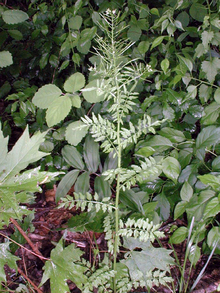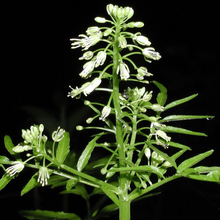Quick facts
Narrowleaf bittercress is an invasive species. Narrowleaf bittercress is on the Control noxious weed list meaning you must prevent the spread of this plant.
- Narrowleaf bittercress is found in forested areas and along rivers.
- It prefers part shade to shade and moist soil, but it is tolerant of a variety of conditions.
- This is a relatively new invader to North America and impacts are still being evaluated.
- It outcompetes desirable vegetation which may decrease habitat quality and species diversity.
Narrowleaf bittercress should be reported. The Minnesota Department of Natural Resources provides detailed recommendations for reporting invasive species.
How to identify narrowleaf bittercress
- Narrowleaf bittercress (Cardamine impatiens) is a herbaceous annual or biennial that can reach a height of three feet.
- First-year plants form a rosette, with the basal leaves dying in winter.
Stem
- A stem forms on second-year plants after first-year rosette stage.
- Narrow, pointed ears or auricles that grasp and may extend beyond stems can be found at the point where leaves attach to stems.
Leaves
- Basal rosette leaves are pinnately compound, with three to eleven round, lobed leaflets.
- Bolted plant leaves are alternate, pinnately compound with 13 or more lance-shaped leaflets.
Flowers
- Small, self-pollinating, and white in color, with four petals per flower.
Seeds
- Housed within a slender pod, about one inch long and similar to that of the mustard family.
- Produced May to September.
- Ripened seedpods burst open and can shoot seed several feet from the mother plant.
- Narrowleaf reproduces exclusively by seed with a single plant producing up to 5,500 seeds dispersed a short distance from the parent plant.
Roots
- Taproot with shallow fibrous rootlets.
-
Narrowleaf bittercress
Reviewed in 2019




